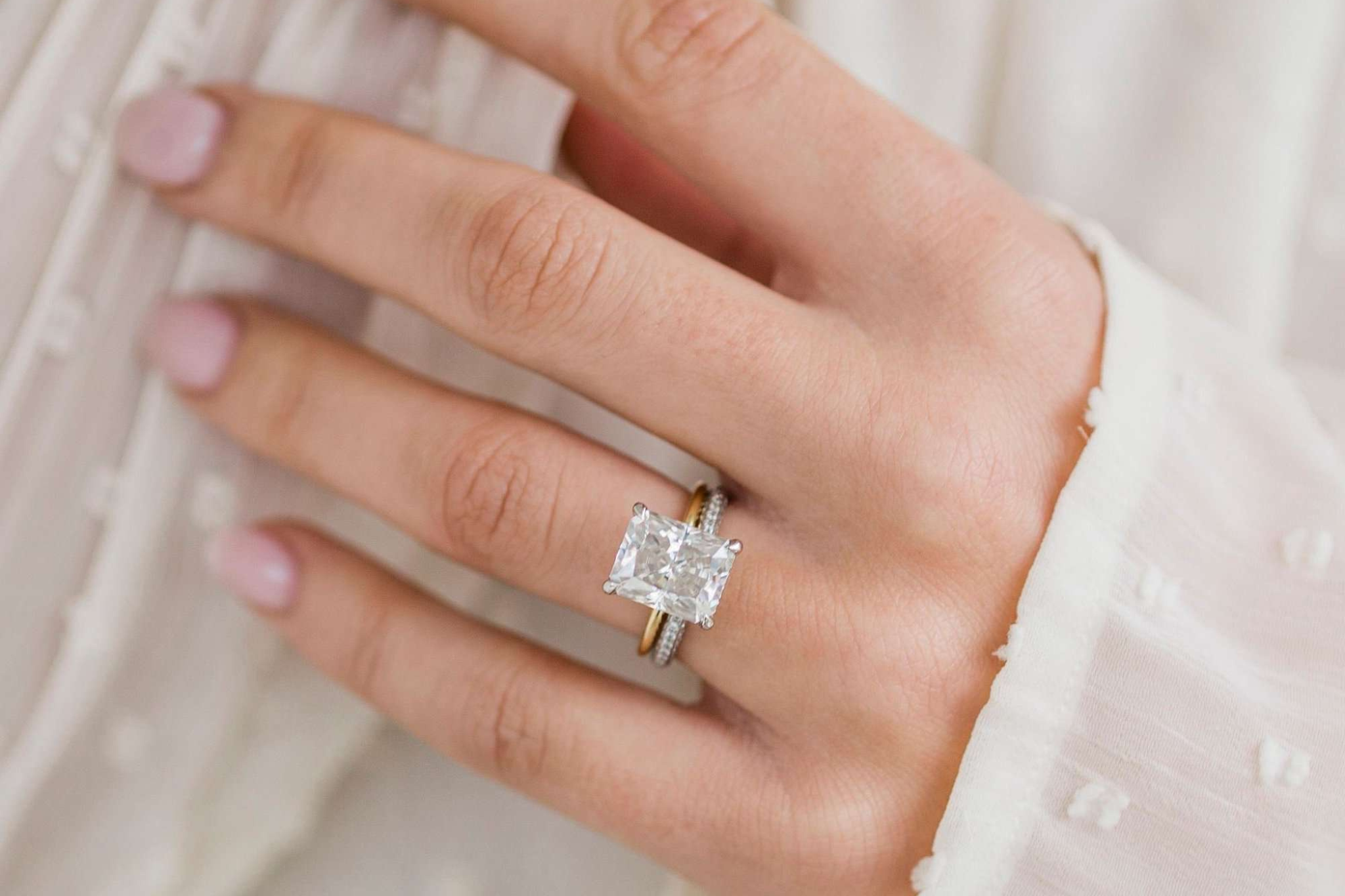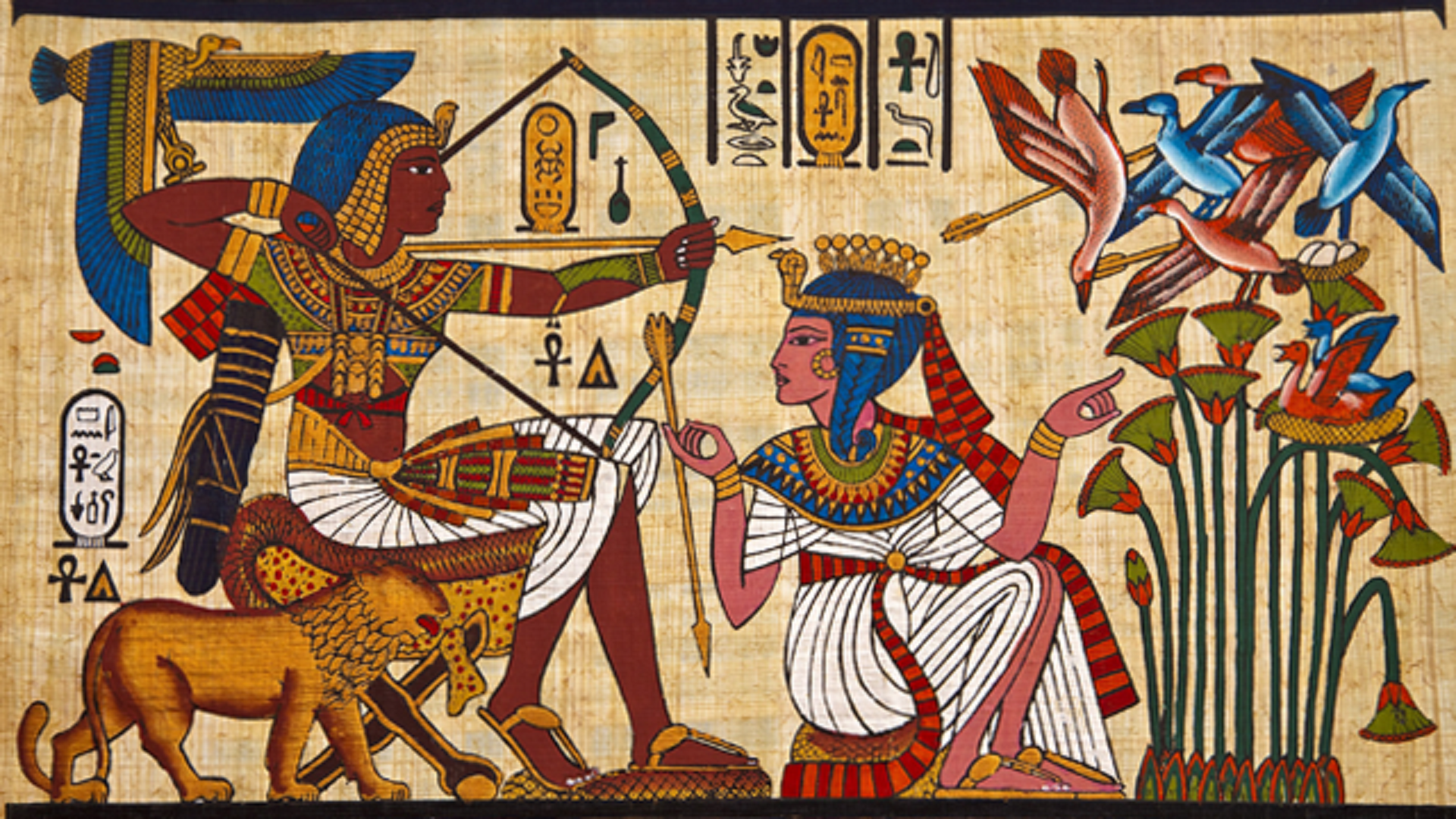Lifestyle
Engagement Ring and Wedding Band: A Complete Guide

Selecting an engagement ring and wedding band is a significant milestone in a couple’s journey. The process involves numerous factors, including styles, metals, gemstones, and settings. With so many options available, understanding the basics is essential. This comprehensive guide will explore the history, significance, styles, materials, and essential buying considerations for both rings. By the end, making an informed decision will become much easier.
History and Symbolism of Engagement Rings and Wedding Bands
The tradition of engagement rings dates back to ancient Rome, where they symbolized a commitment between two individuals. Over time, the custom evolved, incorporating various cultural influences. During the Renaissance, diamonds became popular in engagement rings, signifying everlasting love. Today, the tradition continues, with engagement rings serving as a symbol of devotion and future commitment.
Wedding bands, on the other hand, have a similarly rich history. Ancient Egyptians exchanged rings made of woven reeds, believing in the eternal nature of the circular shape. The tradition spread across cultures, with different materials used over time. Now, wedding bands represent unity and lifelong commitment, exchanged during wedding ceremonies as a testament to love and fidelity.
Differences Between Engagement Rings and Wedding Bands
While engagement rings and wedding bands both signify commitment, their differences should be understood. Engagement rings are typically given at the proposal, featuring a prominent gemstone, often a diamond. These rings are designed to stand out, symbolizing love and the promise of marriage.
Wedding bands, in contrast, are exchanged during the wedding ceremony. They are usually simpler, designed for everyday wear, and symbolize the official union of two individuals. Some couples choose matching bands, while others opt for unique designs that reflect their personal styles. Understanding these differences helps in making the right selection.
Popular Engagement Ring Styles
Numerous engagement ring styles exist, catering to various tastes. Among the most popular designs are:
- Solitaire Rings: Featuring a single gemstone, this timeless style highlights the beauty of the central stone.
- Halo Rings: Encircled by smaller diamonds, the center stone appears larger and more brilliant.
- Three-Stone Rings: Representing the past, present, and future, this design offers deeper symbolic meaning.
- Vintage Rings: Inspired by historical designs, these rings showcase intricate details and unique settings.
- Modern Minimalist Rings: With clean lines and sleek settings, these rings appeal to those who prefer simplicity.
Choosing a style that reflects personality and preferences ensures long-term satisfaction.
Wedding Band Styles and Customization Options
Wedding bands are available in various designs, ensuring a perfect match for different engagement rings. Some popular styles include:
- Classic Bands: Simple and elegant, these bands remain timeless.
- Eternity Bands: Featuring a continuous row of diamonds, these symbolize everlasting love.
- Curved or Contoured Bands: Designed to complement engagement rings, they provide a seamless look.
- Personalized Bands: Engraving initials, dates, or meaningful phrases adds sentimental value.
Customization options also allow couples to create unique pieces, ensuring that their rings hold deeper personal significance.
Selecting the Right Metal for Rings
The choice of metal significantly impacts the overall look and durability of engagement rings and wedding bands. Common options include:
- Platinum: Known for its strength and hypoallergenic properties, it is a preferred choice for long-lasting wear.
- White Gold: Offering a similar appearance to platinum, it requires periodic maintenance to retain its luster.
- Yellow Gold: A traditional option that exudes warmth and elegance.
- Rose Gold: Featuring a romantic pink hue, it has gained popularity for its unique aesthetic.
- Titanium and Tungsten: Durable and modern, these options are ideal for those seeking alternative materials.
Matching the metal of both rings creates a cohesive look, although mixed-metal combinations can also be stylish.
Choosing the Perfect Gemstone
Diamonds remain the most popular choice for engagement rings. However, other gemstones also offer stunning alternatives. Some notable options include:
- Sapphires: Known for their deep blue hue, sapphires symbolize loyalty and trust.
- Rubies: Representing passion and love, rubies make a bold statement.
- Emeralds: Their vibrant green color exudes sophistication and uniqueness.
- Moissanite: A budget-friendly alternative to diamonds, offering brilliance and durability.
When selecting a gemstone, factors such as durability, meaning, and personal preference should be considered.
Understanding Diamond Quality: The 4Cs
For those choosing a diamond engagement ring, understanding the 4Cs—cut, color, clarity, and carat weight—is crucial:
- Cut: Influences the sparkle and brilliance of the diamond.
- Color: Ranges from colorless to light yellow, with colorless diamonds being the most valuable.
- Clarity: Refers to the presence of internal flaws or inclusions. Higher clarity enhances the stone’s appearance.
- Carat Weight: Determines the diamond’s size, affecting both cost and visual impact.
Balancing these factors ensures a high-quality diamond within the preferred budget.
Setting Options for Engagement Rings
The setting of an engagement ring affects both its security and aesthetic appeal. Common settings include:
- Prong Setting: Elevates the diamond, maximizing light reflection and brilliance.
- Bezel Setting: Surrounds the diamond with a metal rim, offering added protection.
- Pavé Setting: Features small diamonds embedded along the band, enhancing sparkle.
- Channel Setting: Securely holds smaller diamonds between metal channels.
Choosing the right setting ensures both beauty and functionality.
Budget Considerations and Smart Buying Tips
When purchasing an engagement ring and wedding band, budgeting plays a crucial role. Setting a realistic budget helps narrow down options without compromising quality. Some smart buying tips include:
- Prioritizing the 4Cs: Focusing on cut quality maximizes brilliance even with a smaller carat weight.
- Exploring Alternative Gemstones: Opting for sapphires or moissanite reduces costs while maintaining beauty.
- Considering Lab-Grown Diamonds: Offering ethical and budget-friendly alternatives to natural diamonds.
- Shopping from Reputable Jewelers: Ensuring authenticity, certification, and reliable customer service.
With careful planning, finding a stunning ring within budget becomes achievable.
Caring for Engagement Rings and Wedding Bands
To maintain the beauty and longevity of rings, proper care is essential. Some maintenance tips include:
- Regular Cleaning: Using mild soap and a soft brush removes dirt and keeps the ring sparkling.
- Avoiding Harsh Chemicals: Exposure to chemicals can damage both metals and gemstones.
- Storing Safely: Keeping rings in a fabric-lined jewelry box prevents scratches.
- Periodic Inspections: Checking settings ensures stones remain secure.
Proper care preserves the value and appearance of engagement rings and wedding bands for years to come.
Conclusion
Selecting an engagement ring and wedding band is a momentous decision, symbolizing love and commitment. Understanding the differences between them, exploring various styles, and considering personal preferences contribute to making the right choice. With careful selection and proper care, these rings will continue to hold sentimental value, serving as cherished reminders of a lifelong bond.
Lifestyle
Mylawyer360.com Family: Your Trusted Partner in Navigating Family Law Matters

Family law encompasses legal issues that arise within familial relationships, including marriage, divorce, child custody, and inheritance. Navigating these matters can be emotionally challenging and legally complex. Mylawyer360.com Family is a platform designed to connect individuals with experienced family law professionals, offering guidance and support during such critical times.
Understanding Family Law
Family law, also known as matrimonial law, addresses legal matters related to family relationships. This includes marriage, divorce, child custody, adoption, and other related issues. The primary objective is to provide fair and equitable resolutions while safeguarding the rights and interests of all parties involved.
Common Areas Covered in Family Law
-
Divorce and Separation: Legal processes to dissolve a marriage, including asset division and spousal support.
-
Child Custody and Support: Determining the living arrangements, visitation rights, and financial support for children.
-
Adoption and Guardianship: Legal procedures to establish parental rights for non-biological parents or guardians.
-
Domestic Violence: Legal protection and remedies for individuals facing abuse within a domestic setting.
-
Property Settlements: Division of assets and liabilities among family members.
Challenges in Family Law Matters
Family law cases often involve high emotional stakes, making objective decision-making difficult. The complexities of legal procedures and the potential for prolonged disputes can add to the stress. Additionally, cultural and societal norms may influence the proceedings, especially in regions with strong traditional values.
The Role of Mylawyer360.com Family
Mylawyer360.com Family serves as a bridge between individuals seeking legal assistance and qualified family law professionals. The platform offers a comprehensive directory of lawyers specializing in various aspects of family law, ensuring users find the right match for their specific needs.
Features and Benefits
-
Comprehensive Legal Services: Access to experts in divorce, child custody, adoption, and more.
-
Verified Professionals: Each lawyer undergoes a strict screening process to ensure credibility and expertise.
-
User Reviews and Ratings: Clients can read feedback from previous users to make informed decisions.
-
24/7 Support: Round-the-clock assistance to address urgent legal concerns.
-
Secure and Confidential: Ensuring user privacy and data protection throughout the consultation process.
How to Use Mylawyer360.com Family
-
Visit the Website: Navigate to mylawyer360.com and select the ‘Family Law’ section.
-
Search for Lawyers: Use filters to find professionals based on location, expertise, and user ratings.
-
Review Profiles: Examine lawyer profiles, read reviews, and assess qualifications.
-
Schedule a Consultation: Contact the chosen lawyer to discuss your case and seek legal advice.
Case Studies
Case Study :
A couple seeking an amicable divorce utilized Mylawyer360.com Family to find a mediator. The platform connected them with a professional who facilitated a smooth and fair settlement, avoiding a lengthy court battle.
Case Study :
An individual facing domestic abuse found a specialized lawyer through Mylawyer360.com Family. The lawyer provided legal protection and guided the client through the process of obtaining restraining orders and initiating divorce proceedings.
Conclusion
Navigating family law matters requires sensitivity, expertise, and reliable legal support. Mylawyer360.com Family offers a trusted platform to connect with qualified professionals, ensuring that individuals receive the guidance and assistance they need during challenging times.
Fashion
new fashioned drink: A Modern Twist on a Classic Cocktail

The world of mixology continually evolves, blending time-honored traditions with innovative techniques. One such evolution is the “new fashioned drink,” a contemporary take on the classic Old Fashioned cocktail. This modern rendition preserves the essence of its predecessor while introducing fresh elements that cater to today’s discerning palates.
Origins of the Old Fashioned Cocktail
The Old Fashioned cocktail, dating back to the early 19th century, is a cornerstone of cocktail culture. Traditionally, it comprises bourbon or rye whiskey, sugar, bitters, and a twist of citrus peel. Served over ice in a short, round glass, it epitomizes simplicity and elegance. This drink has not only stood the test of time but has also inspired countless variations, including the new fashioned drink.
Evolution into the New Fashioned
As tastes and preferences evolved, mixologists sought to reinvent the Old Fashioned, leading to the creation of the new fashioned drink. This modern iteration maintains the foundational elements of the original but incorporates novel ingredients and techniques to enhance its complexity and appeal.
Key Ingredients and Variations
The new fashioned drink retains the core components of whiskey, sugar, and bitters but allows for creative substitutions and additions:
-
Base Spirit: While bourbon or rye remains popular, some variations utilize aged rum, tequila, or even mezcal, offering diverse flavor profiles.
-
Sweeteners: Instead of simple sugar, alternatives like maple syrup, honey, or flavored syrups (such as cinnamon or vanilla) are employed to add depth.
-
Bitters: Beyond the traditional Angostura bitters, mixologists experiment with orange, chocolate, or aromatic bitters to introduce unique nuances.
-
Citrus and Garnishes: Incorporating muddled fruits like cherries or oranges, and garnishing with fresh herbs or exotic spices, elevates the drink’s visual and sensory appeal.
Preparation Techniques
Crafting a new fashioned drink involves meticulous attention to detail:
-
Muddling: Gently muddle sugar or chosen sweetener with bitters and any additional fruits or spices in a mixing glass.
-
Adding Spirit: Pour the selected base spirit over the muddled mixture, stirring to combine the flavors harmoniously.
-
Serving: Strain the concoction into a glass over a large ice cube to maintain temperature without excessive dilution.
-
Garnishing: Finish with a twist of citrus peel, a cherry, or an herb sprig to complement the drink’s flavor profile.
Modern Trends Influencing the New Fashioned
Several contemporary trends have shaped the evolution of the new fashioned drink:
-
Sustainability: Bartenders are adopting eco-friendly practices, such as repurposing kitchen scraps and creating in-house fermentation programs, aligning with the growing emphasis on sustainability.
-
Savory Flavors: The incorporation of savory ingredients, like umami and herbs, has led to more complex and intriguing flavor combinations in cocktails.
-
Innovative Techniques: Modern methods, such as using hydrocolloids like agar agar and xanthan gum, have been employed to create unique textures and flavors in cocktails.
Cultural Impact and Popularity
The resurgence of classic cocktails in popular culture has paved the way for innovations like the new fashioned drink. Shows like “Mad Men” have rekindled interest in traditional cocktails, inspiring bartenders to reinvent these classics for modern audiences.
Pairing the New Fashioned with Cuisine
The versatility of the new fashioned drink makes it suitable for pairing with various cuisines:
-
Appetizers: The drink’s balanced flavors complement charcuterie boards, smoked meats, and aged cheeses.
-
Main Courses: It pairs well with grilled or roasted meats, particularly those glazed with sweet or spicy sauces.
-
Desserts: The richness of the cocktail enhances desserts featuring dark chocolate, caramel, or nuts.
Creating Your Own New Fashioned
Crafting a personalized new fashioned drink allows for endless creativity:
-
Choose Your Base: Select a spirit that aligns with your taste preferences.
-
Select a Sweetener: Experiment with different sweeteners to find a balance that suits your palate.
-
Add Bitters: Incorporate bitters that complement your chosen spirit and sweetener.
-
Garnish Thoughtfully: Use garnishes that enhance the overall flavor and presentation of the drink.
Conclusion
The new fashioned drink exemplifies the dynamic nature of mixology, where tradition meets innovation. By honoring the classic Old Fashioned while embracing contemporary trends and ingredients, this cocktail offers a delightful experience for both seasoned enthusiasts and curious newcomers. Whether enjoyed at a sophisticated bar or crafted at home, the new fashioned drink invites exploration and personalization, ensuring its place in the ever-evolving world of cocktails.
Lifestyle
Ancient Artz: Exploring the Rich Tapestry of Early Human Creativity

The term “ancient artz” encompasses the diverse range of artistic expressions developed by early human civilizations. These
creative endeavors, spanning from prehistoric times to the early Middle Ages, offer profound insights into the cultural, religious,
and social dynamics of ancient societies. By examining various forms of ancient artz, we can appreciate the ingenuity and aesthetic sensibilities that have shaped human history.
Prehistoric Art: The Dawn of Creativity
Prehistoric art represents humanity’s earliest attempts at visual expression, dating back to the Paleolithic era. This period witnessed
the creation of cave paintings, petroglyphs, and carvings, primarily serving ritualistic or communicative purposes. For instance, the
Lascaux Cave paintings in France, estimated to be over 17,000 years old, depict vivid scenes of animals and human figures, suggesting
a deep connection between early humans and their environment.
Mesopotamian Art: The Cradle of Civilization
Mesopotamia, often referred to as the “Cradle of Civilization,” gave rise to remarkable artistic achievements. The art of this region, encompassing the Sumerians, Akkadians, Babylonians, and Assyrians, is characterized by intricate carvings, monumental architecture
, and detailed cylinder seals. These works often depicted deities, mythological scenes, and royal figures, reflecting the society’s hierarchical structure and religious beliefs.
Egyptian Art: Eternal Symbols of Life and Death
Ancient Egyptian art is renowned for its symbolic representation and adherence to strict conventions. Artists employed a distinctive style, characterized by frontalism, where figures are depicted with heads in profile and bodies facing forward. This approach ensured clarity and order, essential for conveying religious and cultural narratives. Artifacts such as the bust of Nefertiti and the treasures of Tutankhamun’s tomb exemplify the Egyptians’ mastery in sculpture and goldsmithing.
Greek Art: The Pursuit of Ideal Beauty
Greek art introduced the concept of idealized beauty and humanism, profoundly influencing Western artistic traditions. From the Archaic to the Hellenistic periods, Greek artists evolved from rigid forms to more naturalistic and dynamic representations. Sculptures like the Venus de Milo and the Discobolus showcase the Greeks’ emphasis on proportion, balance, and the exploration of human anatomy.
Roman Art: Realism and Engineering Marvels
Building upon Greek foundations, Roman art is distinguished by its realism and engineering prowess. Romans excelled in portraiture, capturing the individuality of their subjects with remarkable accuracy. Additionally, their architectural innovations, such as the aqueducts, amphitheaters, and the Pantheon, demonstrate a harmonious blend of functionality and aesthetic appeal.
Asian Art: Spirituality and Philosophical Depth
Ancient artz in Asia encompasses a vast array of styles and mediums, deeply intertwined with spiritual and philosophical traditions. In China, ink paintings and calligraphy reflect the principles of harmony and balance central to Confucianism and Taoism. Meanwhile, Indian art, as seen in the intricate carvings of the Ajanta and Ellora caves, illustrates narratives from Hinduism, Buddhism, and Jainism, emphasizing the pursuit of spiritual enlightenment.
Mesoamerican Art: Sacred Symbols and Calendrical Systems
The ancient civilizations of Mesoamerica, including the Maya, Aztec, and Olmec, produced art rich in symbolism and cosmological significance. Their creations, ranging from colossal stone heads to elaborate codices, often served religious or ceremonial purposes. The intricate Maya calendars and hieroglyphic scripts exemplify their advanced understanding of astronomy and timekeeping.
African Art: Ancestral Veneration and Abstract Forms
African ancient artz is characterized by its emphasis on ancestral worship and the use of abstract forms. Sculptures, masks, and pottery from regions such as Nok, Ife, and Benin reveal a deep connection to spiritual beliefs and social structures. These artworks often incorporate stylized features, symbolizing various attributes and conveying complex cultural narratives.
Oceanic Art: Connection to Nature and Mythology
The indigenous peoples of Oceania created art that reflects their close relationship with nature and rich mythological traditions. Artifacts such as the Moai statues of Easter Island and the intricate wood carvings of the Maori serve as embodiments of ancestral spirits and communal identity. These works often feature motifs inspired by the natural world, emphasizing the interconnectedness of all living things.
Conclusion: The Enduring Legacy of Ancient Artz
The exploration of ancient artz reveals the universal human desire to express, communicate, and understand the world. These artistic traditions, diverse yet interconnected, have laid the foundation for contemporary art forms and continue to inspire and inform modern creativity. By studying and preserving these cultural treasures, we honor the rich tapestry of human history and the enduring spirit of innovation.
-

 Crypto3 months ago
Crypto3 months agoBe1crypto: From Startup to Leading Crypto News Source
-
Review3 months ago
Absolver – Review (Tech Raptor)
-

 Entertainment2 months ago
Entertainment2 months ago123 Movies: Exploring Its Rise, Impact, and Legal Implications
-

 Technology4 months ago
Technology4 months agoCoomersu: A Deep Dive into Its Unique Culture and Traditions
-

 Review3 months ago
Review3 months agoGod Of War: Ascension – A.D.P. Review (+Video Review)
-

 Business4 months ago
Business4 months agoMake1m.com: A Deep Dive into Financial Potential
-

 Technology3 months ago
Technology3 months agoWixnets.com: Your Ultimate Guide to Web Development Tools
-

 Technology2 months ago
Technology2 months ago127.0.0.1:62893 The Gateway to Localhost Connectivity
